

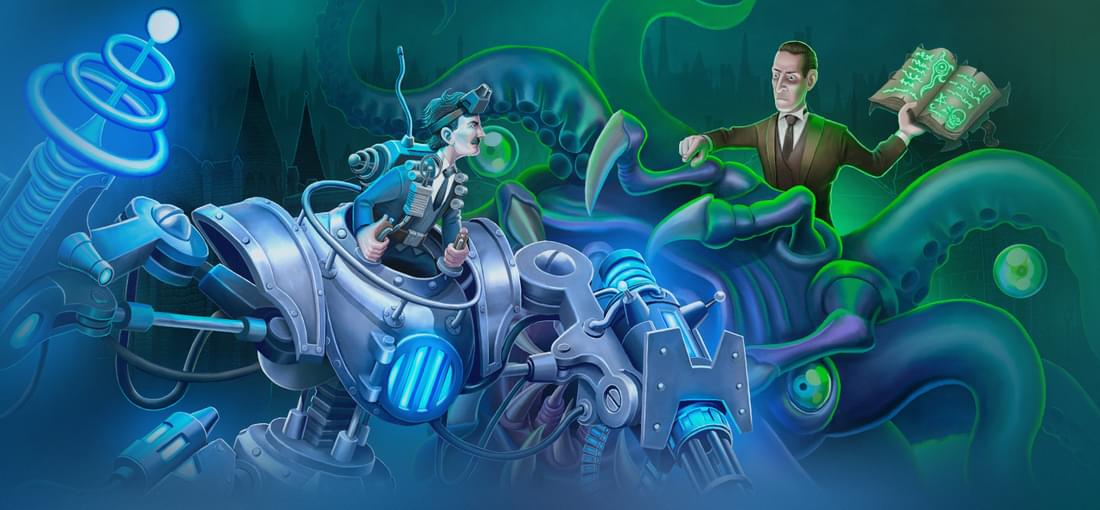
#Summary (66%): If you consider shooting a vast horde of eldritch monsters fun, then Tesla vs Lovecraft is your game. If unpredictable randomness and a grindy unlock system bother you though, steer away. #Review: 10tons has a reputation for its excellent indie top-down twin-stick shooters. Tesla vs Lovecraft follows that same path, combining elements from two previous hits, Crimsonland and Neon Chrome. But, as it turns out, merging two good games does not always yield a fun result. If you ever played a shooter from 10tons, you know that their combat is exceptional. Movement and shooting feel responsive and visceral, every weapon behaves utterly different. We can also summon a giant death robot from the heavens to shred thousands of monsters for us. We are treading knee-deep in dead eldritch abominations… so why is it boring sometimes? Well, it starts with the randomiser. Weapons are even more of a gamble than in Crimsonland—if you get a wrong starting spawn, you might as well reset. A similar notion goes for the perk system: too many of them feel useless, yet sometimes those are all we see. Once you reach the later stages, get ready to reset each level—a lot! Which brings us to the other fly in the ointment, the progress system. Although there are no microtransactions, the game behaves as if it had them. The grind is on par with the worst mobile games and “live services”. We need permanent boosts for the later stages, but they cost an arm and a leg. Even with the daily challenges, it can take days to buy one tier of a single ability. Honestly, I would go as far as saying that this game is unplayable without the DLC because that helps to alleviate the grind somewhat.
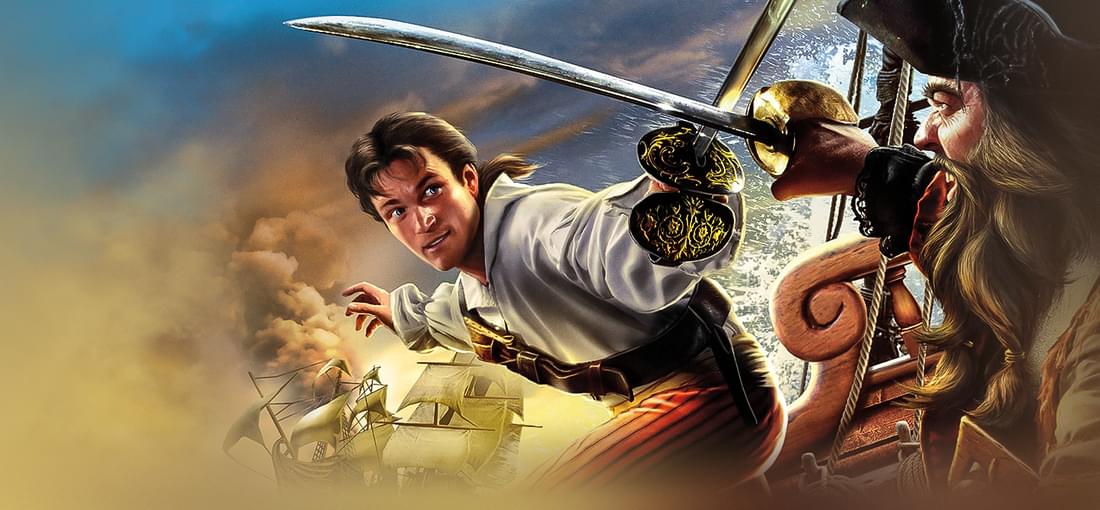
#Summary (70%): ‘Pirates!’ is colourful, fun, and a fantastic game, at least in short bursts. If you want to play the entire story mode, it becomes too simplistic, stale, and repetitive, though. #Review: ‘Sid Meier’s Pirates!’ is a cult classic, both in its original form and in this faithful 3D reimagination. It embodies every single pirate adventure fantasy any child ever had. Do you want to partake in acrobatic sword fights? Do you wish to search for pirate treasure and Inca gold? Do you want to sail the Caribbean, plundering ships or capturing enemy towns in the name of the Crown? This game has plenty of each. ‘Pirates!’ is all about giving freedom to the player. We can do whatever we want, the entire Caribbean is our playground. We can trade, plunder, conquer, or barter. We can jump allegiances faster than a stockbroker. We are also not hampered by any kind of story since the game has none. We are a young man whose family was kidnapped… and that is it. We search for them while getting filthy rich. That sums up the entire plot. On the flip side, ‘Pirates!’ is barely more than an endless stream of minigames interwoven by long sea trips. Are you visiting a port? Prepare for a dance minigame, a duel minigame, or both. Did you accept a mission from someone? Well, it will always end up in at least one naval battle, so more duel minigames. No matter what you do, the game is sailing, dancing, and duels. Sometimes there is some variety when you sneak into a town, search for treasure, or attack a settlement. The thing is, those minigames are not fun. They are bad, frankly. I swear it is easier to increase your relationship by hunting a dozen pirates than sneaking around in town. As a whole, I admit that ‘Pirates!’ is fun. I would go as far as saying that it is still the best of its kind to this day. Still, it is only fun for a few hours at best before the self-repeating grind starts to wear you out.
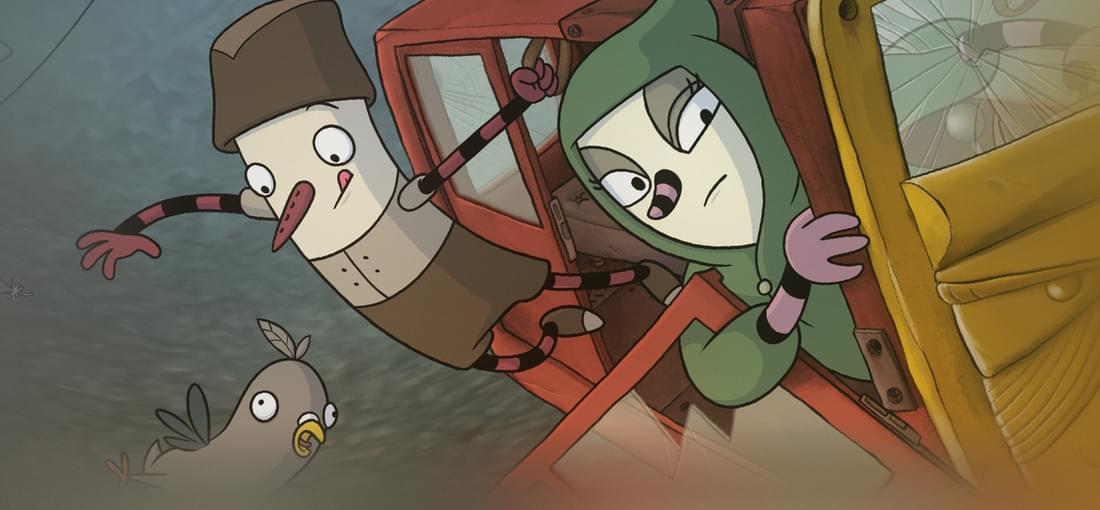
#Summary (72%): If you liked the first Inner World, you would like this sequel too. After all, it is still the same recipe with a little more puzzles and locations. The English voice acting can be a tad wooden, but the sheer charm often makes up for it. #Review: The Inner World was a surprisingly cute adventure game set in a strange world. While it was not as surreal as, for example, Anamita Design’s games, it had its own uniqueness that clicked with its audience. Its sequel, The Last Wind Monk, tries to cash in on the formula once more. Story-wise three years passed yet nothing changed. In blunter words, this sequel reuses the previous plot without any remorse. We face the same peril, a zealot edging the world towards its doom. Even the zealot feels familiar since he is the previous one’s disciple. Only if the old one had a Spanish Inquisition, the new one controls the Third Reich. Yes, we are getting this transparent with the intended message. Political overtones or not, the game is still as cute as a bug. The visuals are cartoonish, round, and colourful. Robert, our bumbling main protagonist, keeps stumbling through his challenges with childlike innocence. Said challenges themselves changed quite a bit, though. Like the first game, The Last Wind Monk uses an alien world that uses many strange concepts. On top of that, it embraces the infamous adventure game moon logic. With such a combination, some puzzles will never make any sense, no matter how much you try. (Be prepared: the switchboard puzzle will haunt your nightmares!) This difficulty has another job: to mask the game length. The Last Wind Monk is shorter than its predecessor, yet also more padded. Since the story has two parallel threads, this pace and padding make it difficult to follow the plot. The somewhat lifeless acting does not help either. Still, in the end, this is a worthy sequel for those who loved the first game.

#Summary (55%): On the surface, 8-bit Armies captures the glory days of the early Command & Conquer games. Once we look past its modernised mechanics, we find a repetitive, simple RTS underneath. #Review: 8-bit Armies does not even try to hide the fact that it is a C&C: Tiberian Dawn clone. Almost everything is here, from the user interface to the tech trees or unit types. The sound design is especially noteworthy of re-creating the original game. It is not surprising that EA selected these developers years later to remaster the original C&C. Despite these great call-backs, 8-bit Armies feels like a cheap fan project. For example, there is only one faction (unless you buy the DLC), so everything is a mirror match. There are only a handful of maps, thus the campaign is rotating them with increasing enemy bases. As much as I like the old C&C atmosphere, I was not ready for an AI that also matches 1995 standards. Finally, it felt strange using modern RTS controls in a C&C-like environment. As for the added elements, they are so-so. I liked that we could use the campaign rewards to buy permanent starting upgrades. Then again, we need these to revisit earlier levels as the gold time limits are ridiculous. 8-bit Armies also faithfully recreates the old tank rush strategy all too well. Higher-tier units have a mountain of health, so rushes are the only viable strategy in the entire game. If someone has an irresistible C&C itch, then 8-bit Armies can scratch it. I am not sure though that it is a better remedy than many similar (and free) fan projects. Especially if you skip the DLC, the only thing that adds some real variety to it.
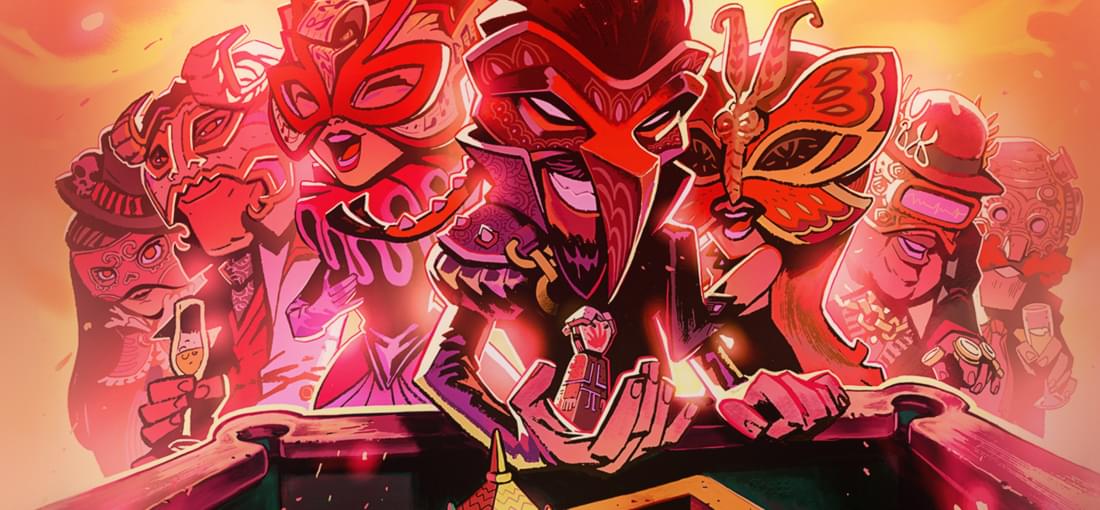
#Summary (83%): Sexy Brutale has an interesting time travel puzzle mechanic and a gripping murder mystery. I found the story too predictable, though. #Review: The Sexy Brutale oozes atmosphere from its every element. It almost feels like entering the world of a classic whodunnit detective story. Heck, it even takes place in a large Victorian-style casino/mansion! The one big difference is that we already know that the staff is murdering the guests. Thus, our job is twofold. First, we must use our time travel powers to prevent these murders. And second, we must find out the truth behind the events and the mysterious masks all guests wear. Despite this setup, do not expect much investigation or detective work. The core gameplay is re-living the same few hours until we bump into the answers to the same four questions. Who is the current victim? How are they killed? What do they do before their death? What can we do to disrupt this event chain and save their life (and thus gain their mask)? The only limitation is that we cannot interact with anyone, not even the victims. The result is a hefty chunk of trial and error in perfect timing. Then again, this is the nature of all time travel puzzle games, so it is hardly a negative in this case either. Atmospheric or not, the game suffers from its limited budget. Many parts of the casino look more cute than detailed or fancy. The soundtrack is catchy, yet there are no voiceovers whatsoever. It is sad, as I would have loved to hear some cartoonish voices for the colourful cast of kooky characters. Finally, there is the story. Like most similar mysteries, it can be enjoyed only once, until we learn the truth. Said truth, however, is its big weak spot as observant players will see it coming from afar. It is another cheap Silent Hill-esque twist that rarely pays off, and Sexy Brutale is not one of those good examples.
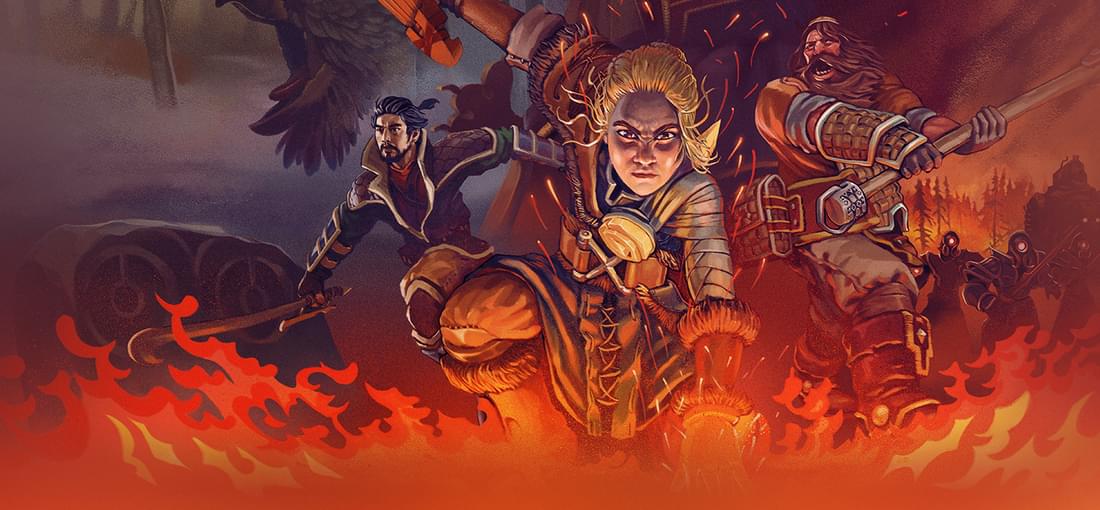
#Summary (62%): Iron Danger promises us free reigns over the combat with its time rewind mechanic. Although I had fun with this element, the rest of the game felt mediocre. #Review: Time rewind is not an uncommon gimmick in puzzle games, but I rarely saw it outside that genre. Apart from Iron Danger, the only examples I recall are the modern Prince of Persia games. I am a sucker for this mechanic, so at first, I was not too bothered by the abundance of every JRPG cliché in the book. A dastardly empire of pure evil attacking the good kingdom. Our village burns down in the first chapter. The heroine must collect a set number of McGuffins to save the world. You know the rest by heart by now. I was also not impressed by the characters. Frankly, the mentor’s discount store knockoff Yoda speech irked me to no end after a while. As for the protagonist, I hated her. She whines most of the game about how she wants to go home, then all the sudden she is an inspiring commander. I admit, she grows into her role well, but that is hardly a redemption for her character arc. Still, I endured the story. I endured when I realised the game uses only two types of level layout. I endured when some enemies took 10 minutes to beat. I endured because I started to enjoy the combat. I can understand if players will find it difficult to see the good side of Iron Danger's combat mechanics. After all, it starts quite boring: we can dodge, swing a weapon, and that is it. Then, as the protagonist starts gaining spells, the tactical window also opens. In the end, it reached the point where I soloed entire levels once I unlocked mind control. It was fun. I finally clicked with the game. Still, you can tell that Iron Danger lacks the resources and the polish of a large AAA project. It is rough around many edges, and I can understand if that deters many players. I would still recommend it if you like tactical games, especially at a discount price.

#Summary (55%): Most puzzles are okay for a casual game and the story is passable, but the game lacks too many convenience features, has a sluggish pace, and the puzzles can be tedious. There is a very good chapter in the middle, but that is Agent A's only real merit. #Review: Agent A is a fun adventure game, assuming you have never played any point-and-click since the original version of the first Myst. The first thing you will remember about it is the ridiculous amount of backtracking and transition scenes, as there is no map, quick-travel, or anything similar. Combine it with the complete lack of hints, journals, or anything that would help the player, and you get a game where you either use a walkthrough or accept that you will spend 80% of your time travelling without doing anything useful. Even when I remove all this inconvenience, the rest of Agent A is mediocre at best. The puzzles hover between the quality of a bad hidden object game and a lazy mobile adventure. In themselves, none of them is terrible, but they repeat too much (especially the "guess the combination" types). The story is just your Saturday morning cartoon spy stuff with charmingly dumb humour. It is okay and entertaining all right, but it is also predictable, it takes ages to get anywhere, and in the end, it is utterly forgettable. However, I am giving it three stars, because the third chapter was genuinely awesome. It is a puzzle box/escape room scenario, and it was the only segment where I felt the developers were at least trying to give something for our money beyond a weak 3D hidden object game.